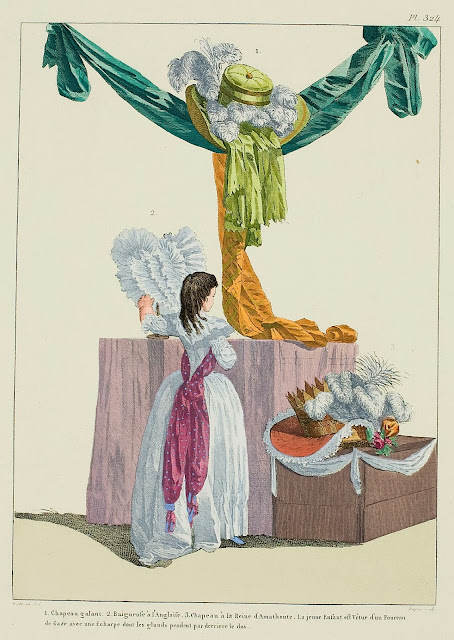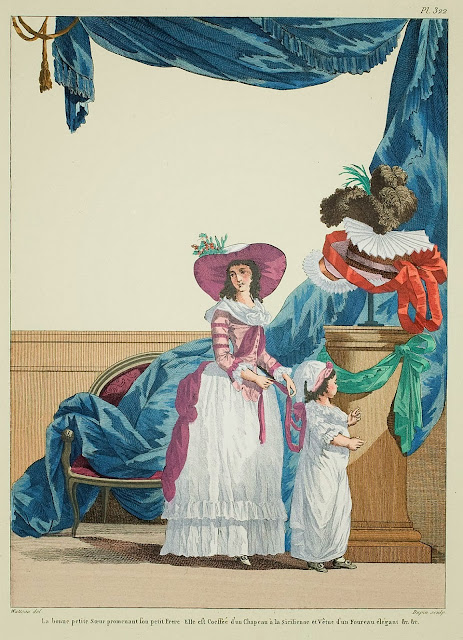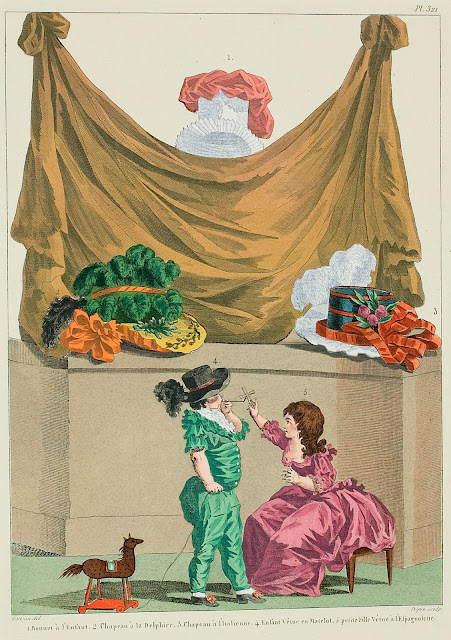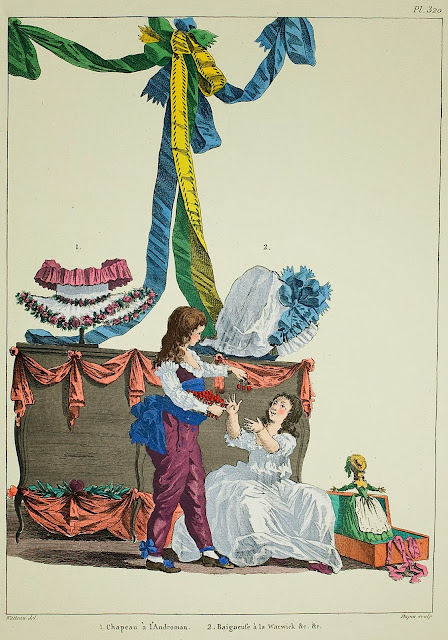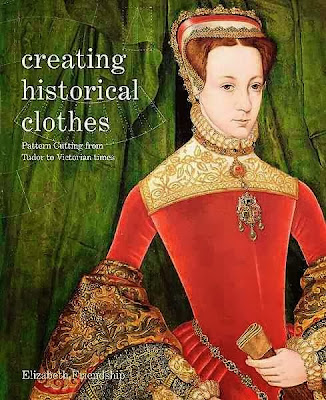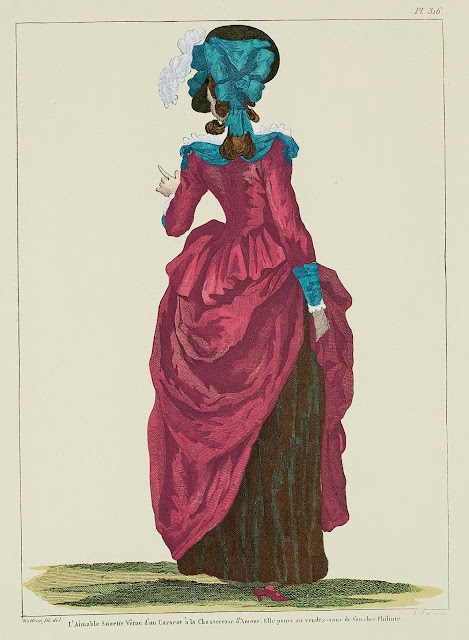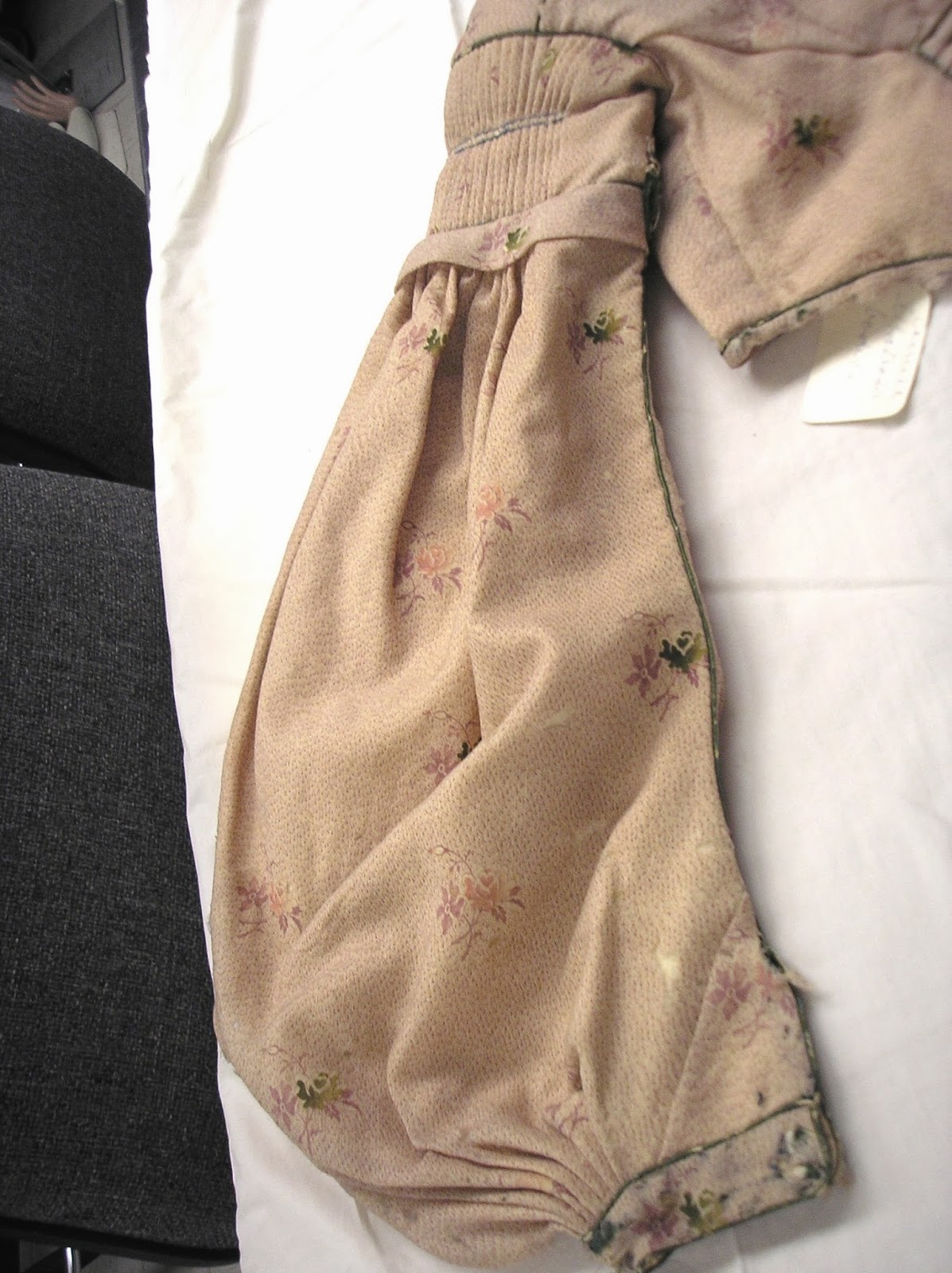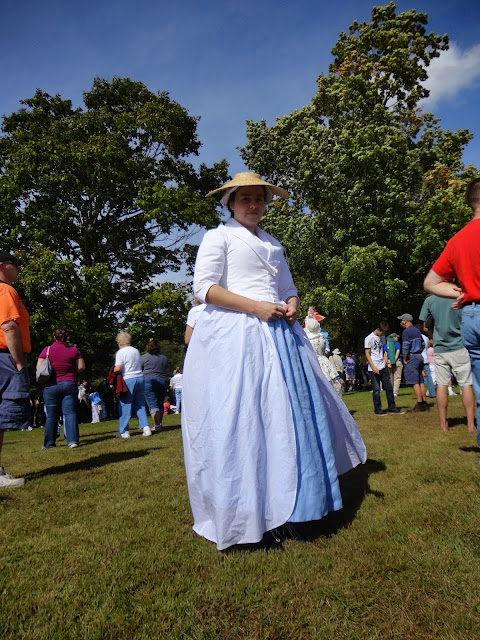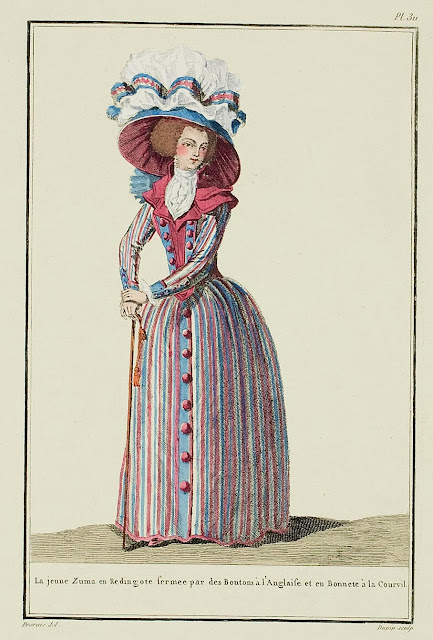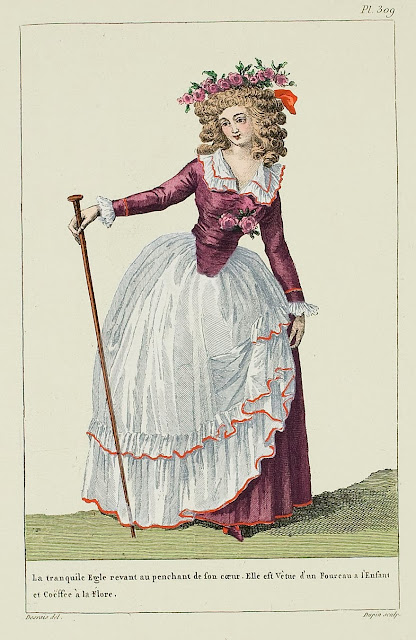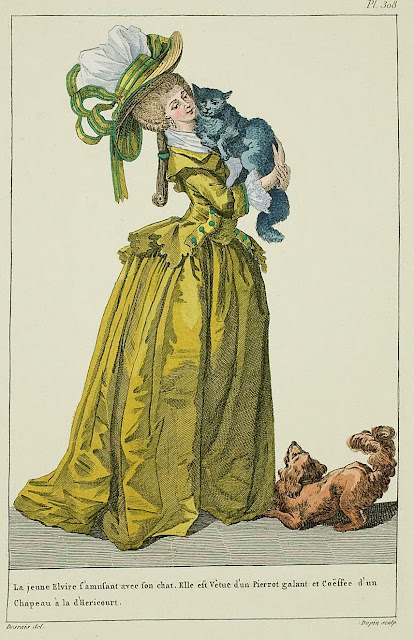Galerie des Modes, 63e Cahier, 6e Figure
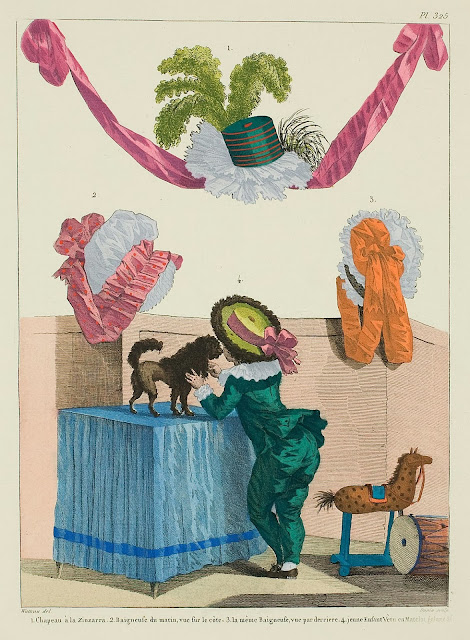
1. Hat à la Zinzarra . 2. Morning baigneuse , seen on the side. 3. the same Baigneuse , seen from the back. 4. young Child Dressed in a galant Matelot etc. "Children ... also have fashions, that their fathers and mother are not vexed to learn; for they are often confused to know how to dress them. "Little girls almost always follow women's fashions; but little boys, that are dressed in matelots , have particular clothes. "One sees by the representation of the little boy, that he wears matelot breeches of silk; ... a gilet with wide stripes ...; a long silk jacket ... edged with a piping ... and that this jacket is trimmed with half-sleeves of white batiste at the end of which are attached manchettes . "His shirt is trimmed with a wide frill or collarette with double flounces. "His hair, only straight, hangs in curls on his shoulders. "... He wears little yellow brodequins on his legs ..." Le Magasin des Modes , 10 ...
